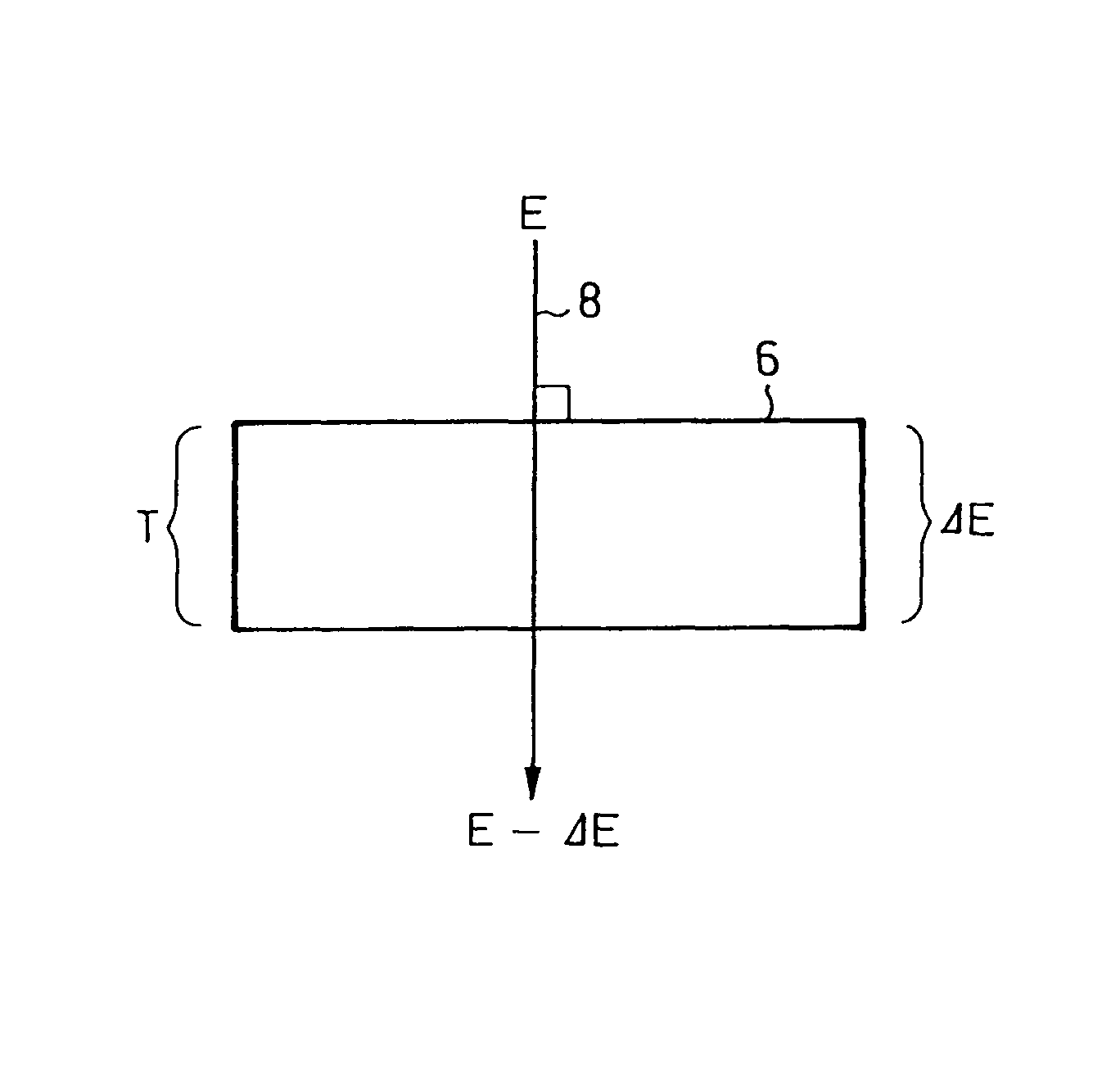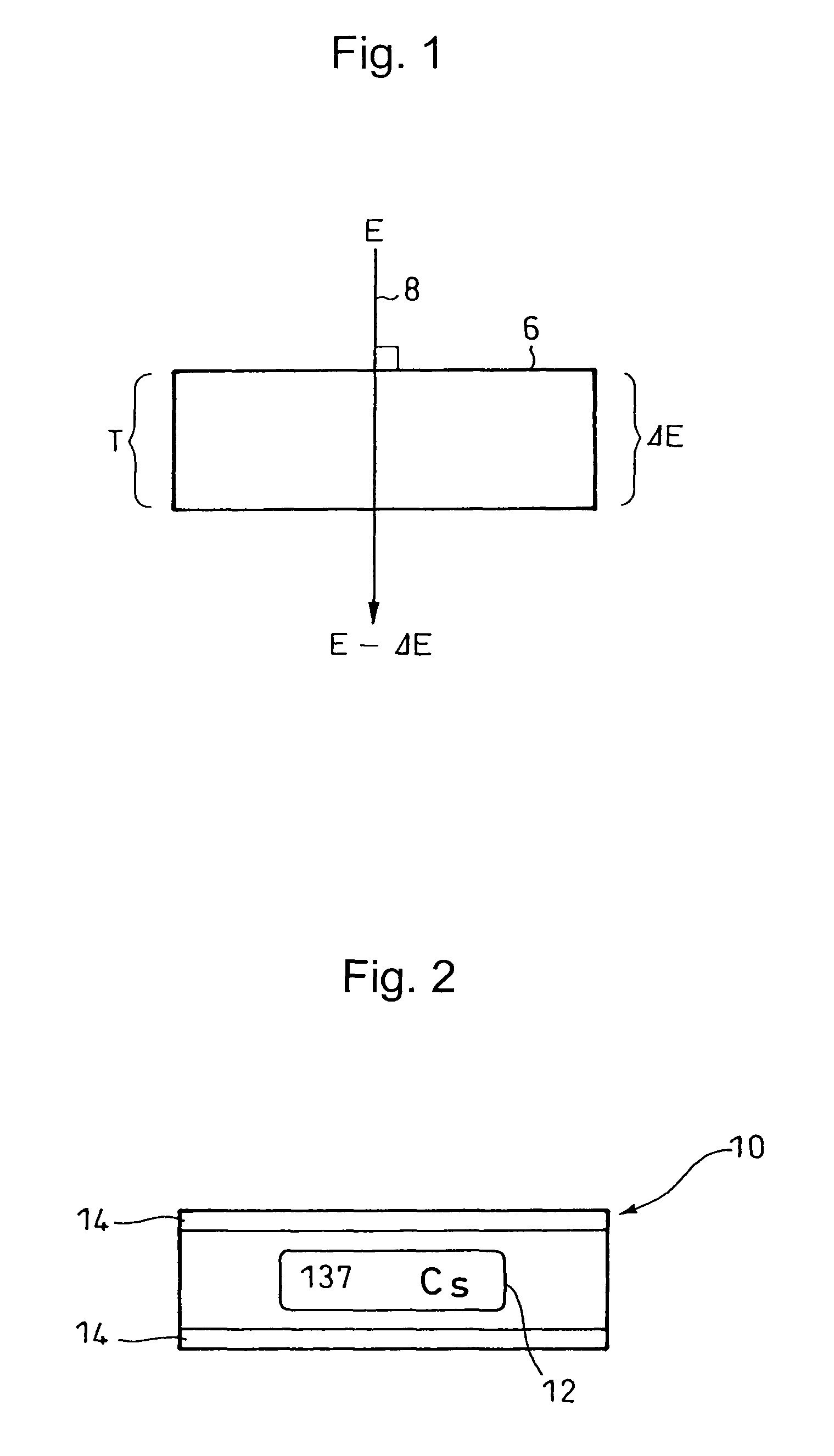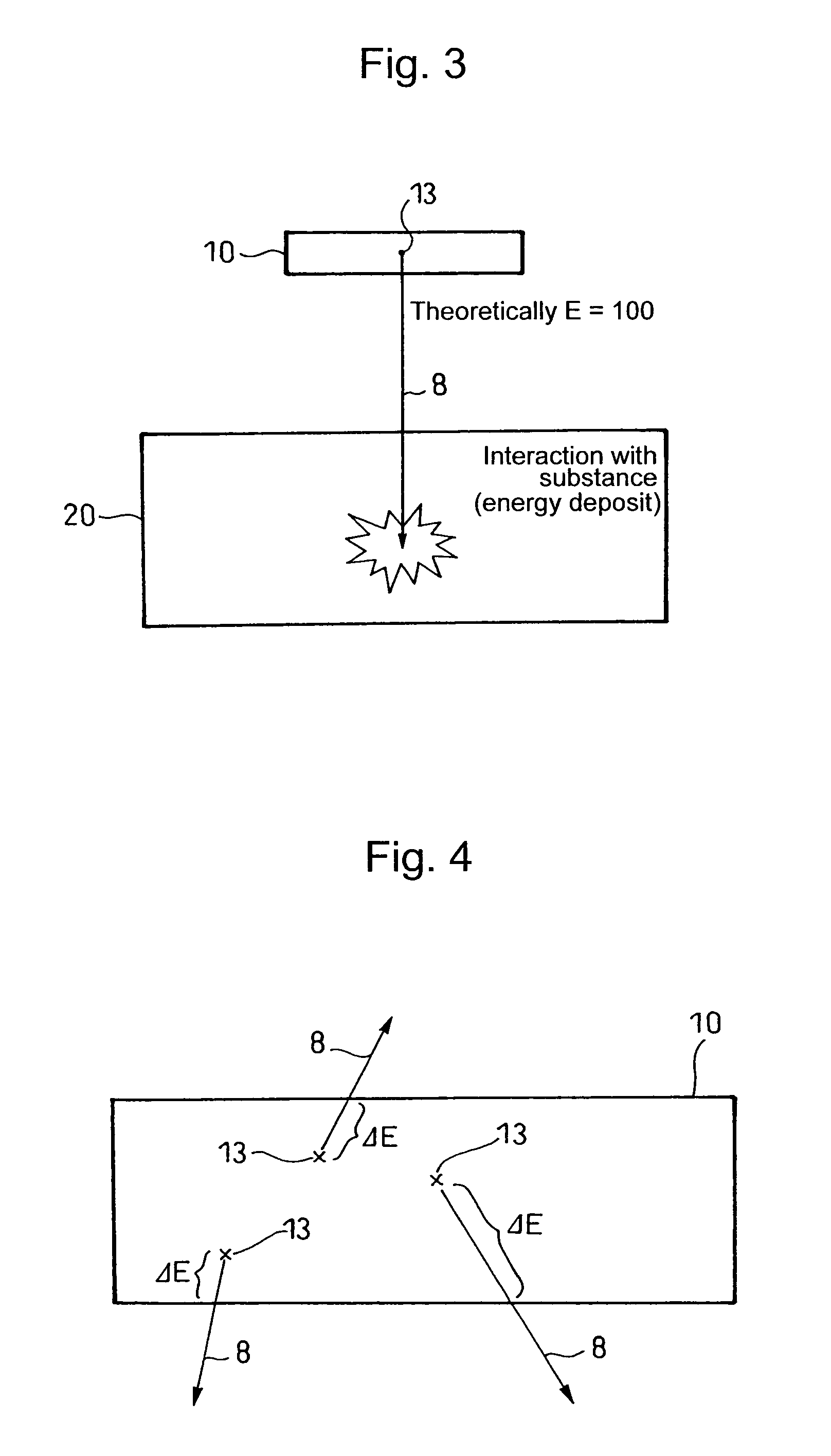Method, device and program for estimating particle emitted from radioisotope source, method for estimating radiation detector, method and device for calibrating radiation detector, and radioisotope source
a radioisotope source and particle estimating technology, applied in the direction of material analysis using wave/particle radiation, instruments, nuclear engineering, etc., can solve the problems of no physical basis for exponential function, no energy deposit within a radioisotope source, and inability to achieve accurate estimation
- Summary
- Abstract
- Description
- Claims
- Application Information
AI Technical Summary
Benefits of technology
Problems solved by technology
Method used
Image
Examples
example
[0124]As an example, energy spectra obtained when a group of radiations emitted from a 137Cs and a 207Bi thin film radioisotope source were measured by a plastic scintillator (6.2×6.2×1 cm3) and a result of detector resolutions estimated with use of Formula (6) are shown in FIG. 14 and FIG. 15, respectively.
[0125]As shown in FIG. 14, six radiations in total are mainly emitted from the 137Cs; internal conversion electrons with 625.6 keV from K shell, 655.9 keV from L1 shell, 656.3 keV from L2 shell and 656.6 keV from L3 shell, beta particles with a Q value of 513.9 keV and gamma rays with 661.6 keV. The beta particles, the gamma rays and four beams of the internal conversion electrons having different levels of energy are classified in FIG. 14.
[0126]From the 207Bi isotope, as shown in FIG. 15, twelve radiations in total are mainly emitted; a group of internal conversion electrons with 975.6 keV from K shell, 1047.8 keV from L1 shell, 1048.4 keV from L2 shell and 1050.6 keV from L3 sh...
PUM
| Property | Measurement | Unit |
|---|---|---|
| energy distribution | aaaaa | aaaaa |
| thickness | aaaaa | aaaaa |
| thickness | aaaaa | aaaaa |
Abstract
Description
Claims
Application Information
 Login to View More
Login to View More - R&D
- Intellectual Property
- Life Sciences
- Materials
- Tech Scout
- Unparalleled Data Quality
- Higher Quality Content
- 60% Fewer Hallucinations
Browse by: Latest US Patents, China's latest patents, Technical Efficacy Thesaurus, Application Domain, Technology Topic, Popular Technical Reports.
© 2025 PatSnap. All rights reserved.Legal|Privacy policy|Modern Slavery Act Transparency Statement|Sitemap|About US| Contact US: help@patsnap.com



